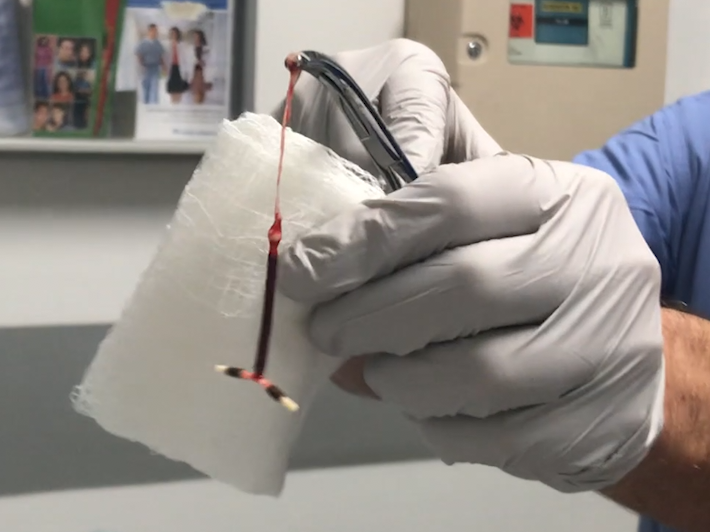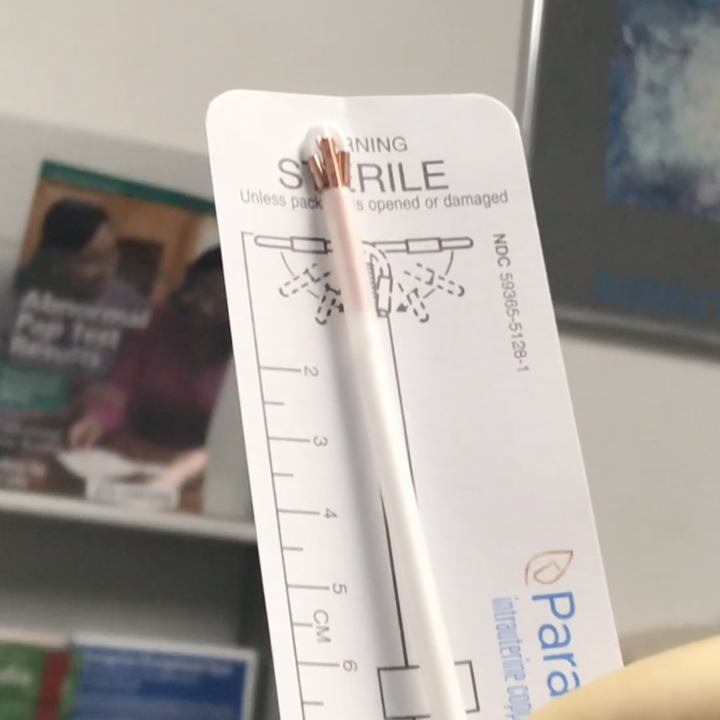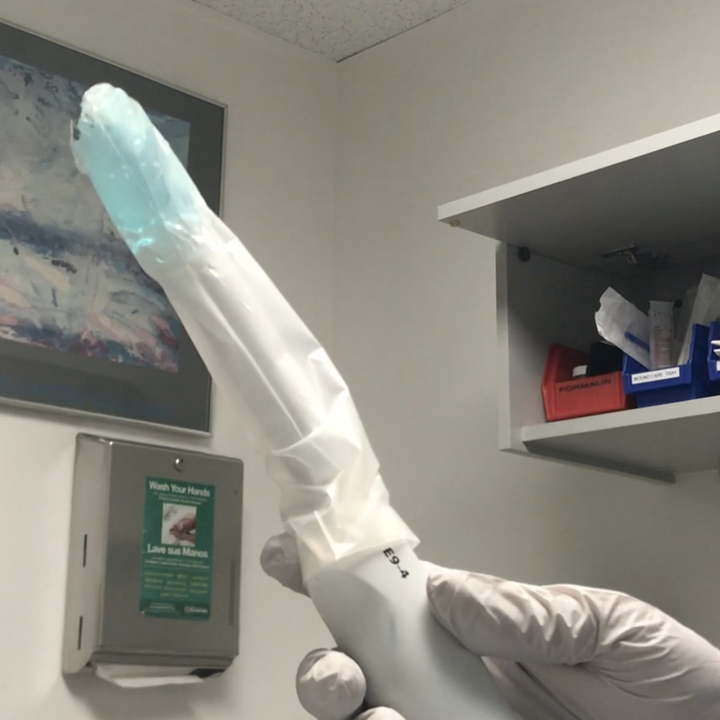
[ad_1]
Hi, I’m Krista, and my Paragard IUD recently expired after a 12-year run 😭. Since I still want my body to remain a ~baby free~ zone, I got it taken out and a new one put in. I decided to document and share the entire experience for anyone who is curious or thinking about getting one.

Krista Torres
PS: If you’re wondering why I’ve had it in for 12 years instead of the 10 years we often see advertised, my doctor told me a few years back that clinical studies show it is good for a couple of years longer!
When I got my first (and only) IUD put in, I had just had a baby, and I don’t remember that procedure or what it felt like at all. So this time around, I was TERRIFIED — hence why I put off getting it removed until it was absolutely necessary. I hate getting Pap smears, and I knew this was going to be way worse than a Pap. However, I also knew that if could handle childbirth, I could handle this.
ABC
If you’ve ever read any of my past articles, you may be thinking, Wait a minute, aren’t you that girl who got pregnant with an IUD?! Well, lol, yeah that’s me. But my IUD pregnancy ended up being ectopic (or in my Fallopian tube). I decided not to have that IUD removed during surgery because my odds of getting pregnant would still be the same — and likely higher — on any other form of birth control. IUDs are one of the most effective forms of birth control, with over 99% effectiveness. TBH, though, the main reason I kept it is that the Paragard is the only hormone-free, long-term form of birth control on the market — and I don’t do well with hormones.
Before we get into the details of the procedure, let’s talk about what the Paragard is and how it works. It is a small, T-shaped plastic device with copper wire coiled around it. Inside the uterus, the copper creates an inflammatory reaction that is toxic to sperm and eggs — making it highly effective at preventing pregnancy.

Fancytapis / Getty Images
Note: With other IUDs, it is common for your period to stop. But with the Paragard, you will still get a monthly period.
I am fortunate to have insurance through Kaiser Permanente in Los Angeles (where I got my procedure done), so — through my plan — the IUD only cost me a copay of $25, and the removal of the old one was free.
View this photo on Instagram
@kpsocal / instagram.com
The cost of getting an IUD in the US without insurance can be anywhere from $500 to $1,300, so when I say I am very fortunate, I truly mean it!
Before we get into the details of the procedure, please remember that this is my personal experience, and getting an IUD can be different for everyone. Here is a detailed video of the entire insertion and removal process:
Krista Torres / youtube.com
This link will also take you to the video.
The first thing they had me do was sign a waiver agreeing to the procedure and the type of IUD I wanted. After that, it was like a typical doctor’s visit, where the nurse takes your temperature, weight, and blood pressure.

Krista Torres / Kaiser Permanente
Next, they gave me a pregnancy test to make sure I wasn’t pregnant. So don’t pee beforehand, because they’ll probably make you take a urine test! Once it came back negative 😅, I was taken back to one of the rooms.

Krista Torres / Kaiser Permanente
My doctor first opened my vagina with the same speculum that is used during Pap smears. He then got ready to numb my cervix. Do yourself a favor and DO NOT look at the shot if you get one. The needle is HUGE…
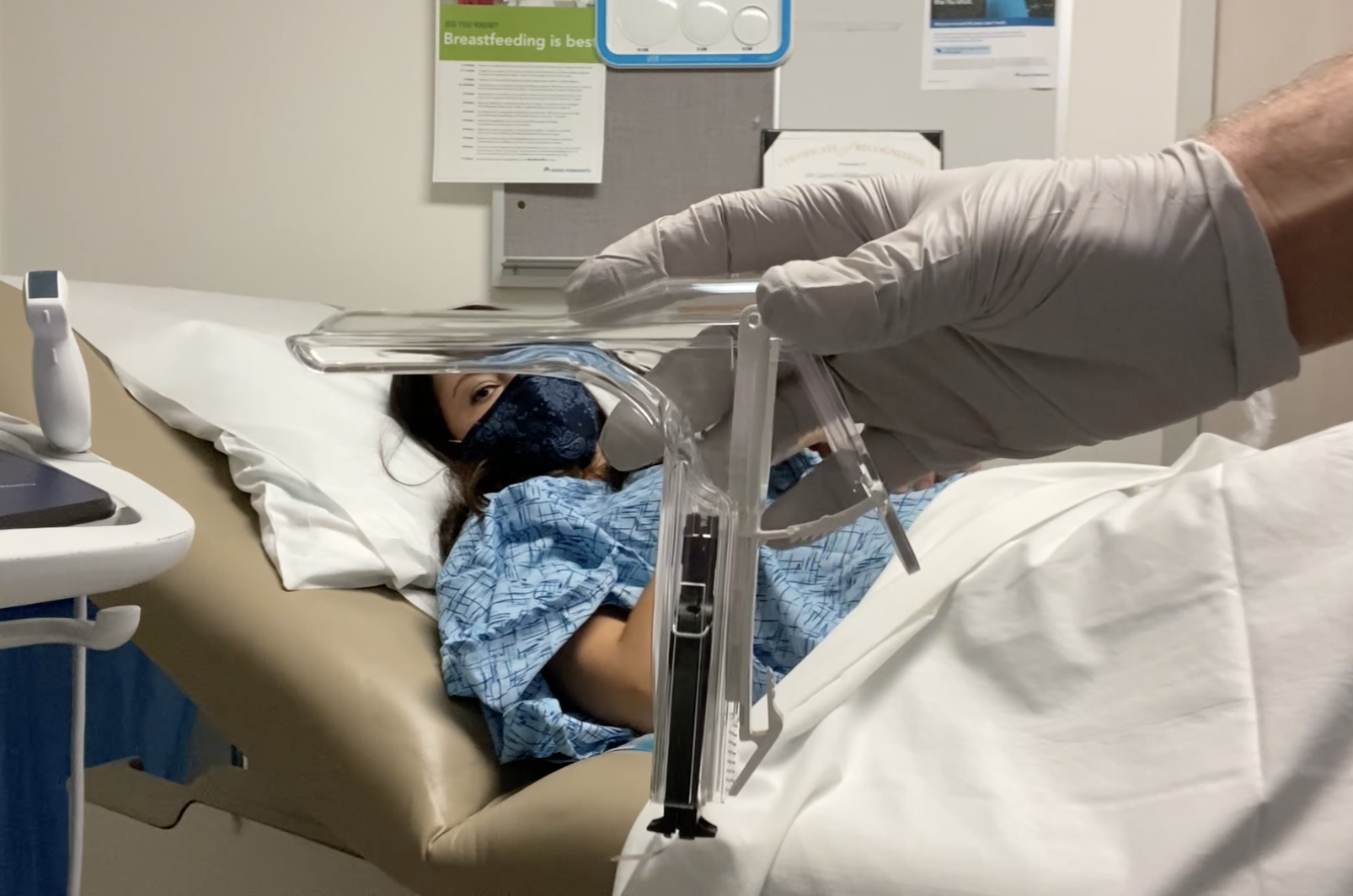
Krista Torres / Kaiser Permanente
…WHEN I SAY “HUGE,” I AM NOT EXAGGERATING:
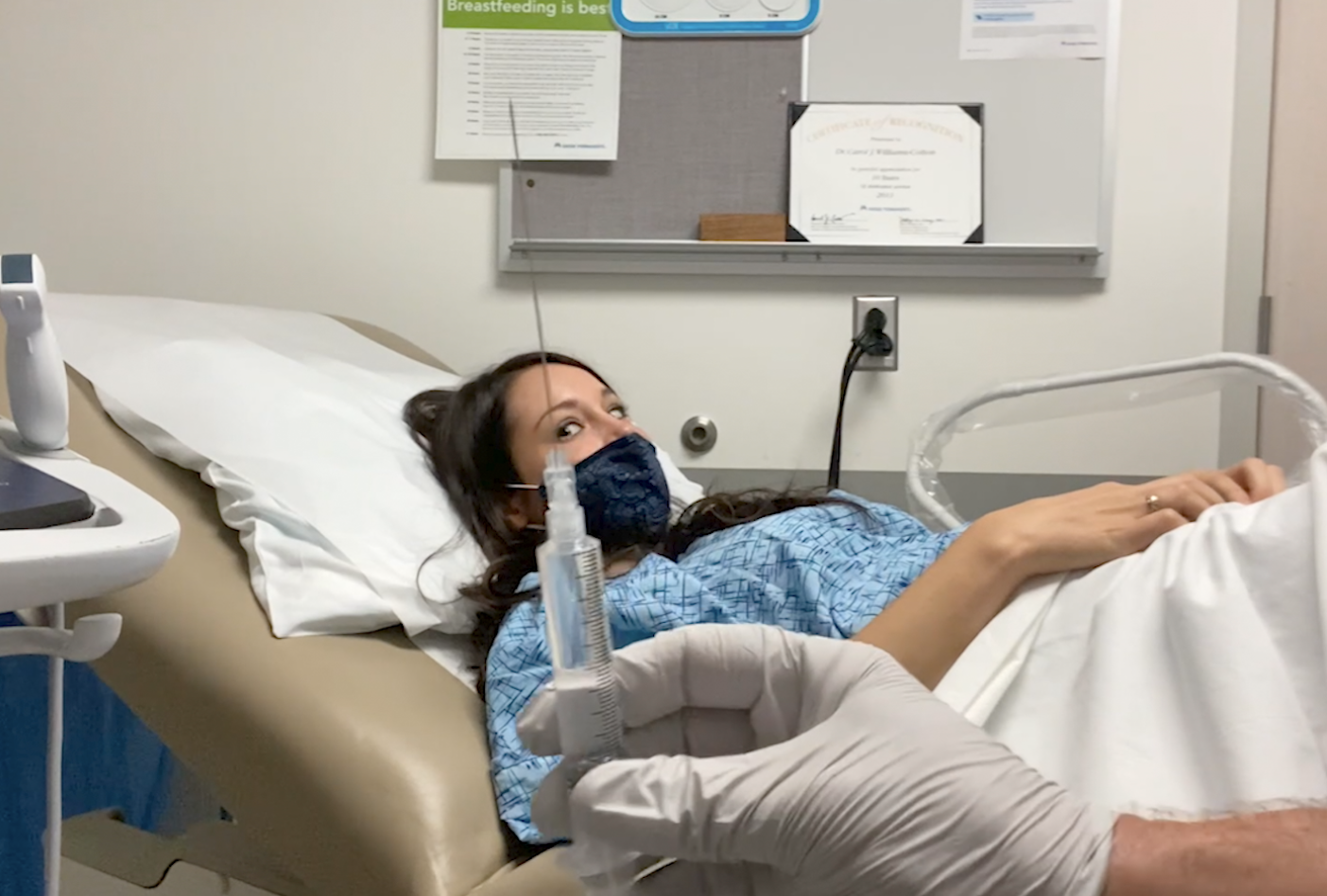
Krista Torres / Kaiser Permanente
Note: I have had friends tell me their doctor didn’t offer anesthesia, so it may be something you have to ask for (that is, if you’re brave enough after seeing this pic)!
There’s no delicate way to put this: The pain of the three shots I was given was excruciating. It feels exactly the way you would imagine a ginormous needle being inserted into a very delicate internal organ would feel. I also felt really lightheaded and woozy after getting them. Fortunately, though, the shots were quick and the nauseous feeling subsided after a few minutes.
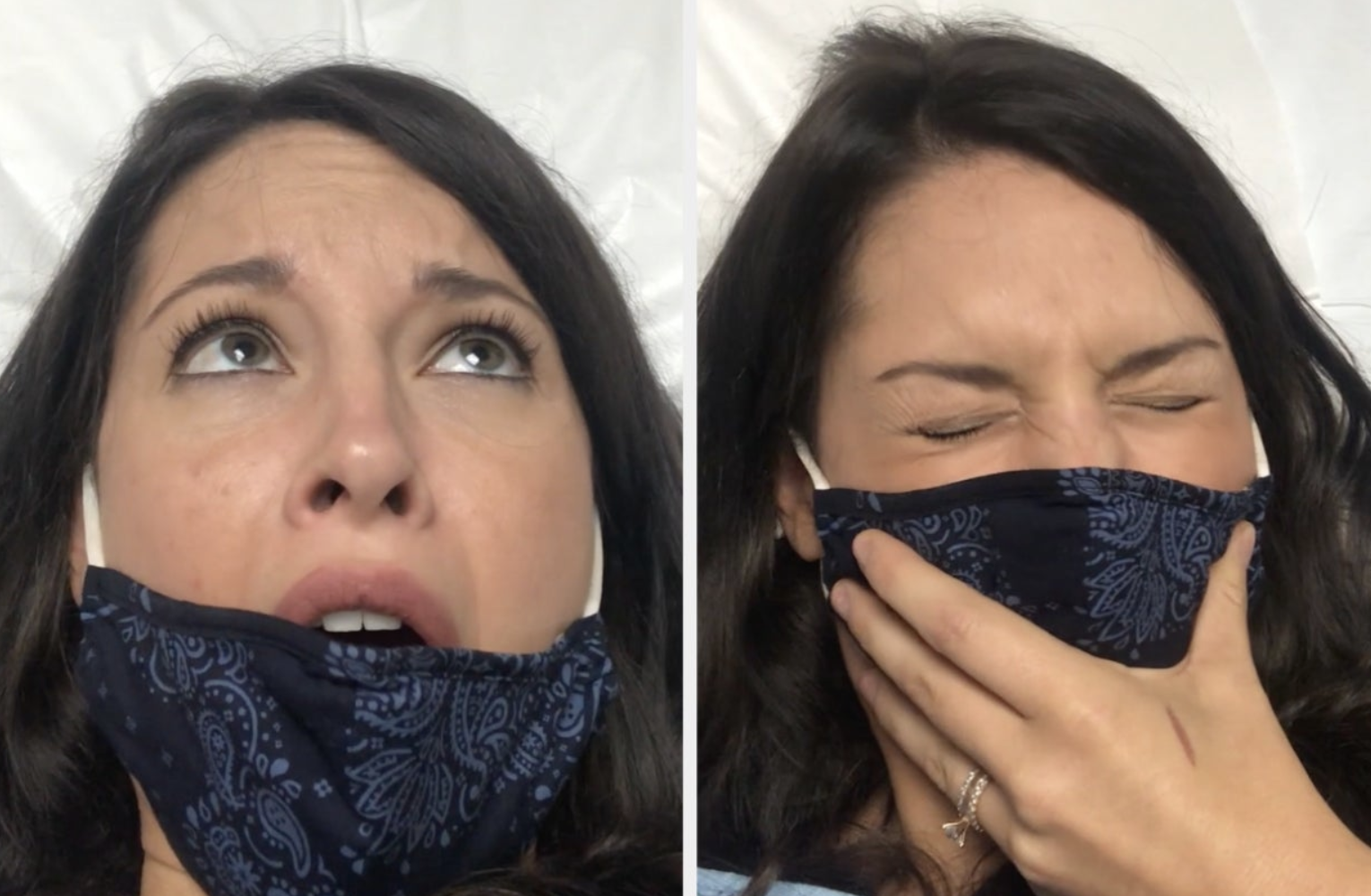
Krista Torres / Kaiser Permanente
After the old IUD was out, my doctor quickly got the new one ready to put in. (At this point, we were probably 10 minutes into the procedure.) First, he measured my uterus to make sure the IUD would fit properly. While he was doing this, I felt slight discomfort and and intense pressure — but the pain wasn’t nearly as bad as the shots. Once he confirmed that the new IUD would fit, he got ready to insert it.
Krista Torres / Kaiser Permanente
The IUD had to be “loaded” for insertion. The wings are folded up into a tube so that they can fit into the cervix, which is the narrow canal leading to the uterus. Then, once the tubing is inside, the IUD is pushed into the uterus and the wings spring out to each side.
Krista Torres / Kaiser Permanente
The IUD had to be “loaded” for insertion. The wings are folded up into a tube so that they can fit into the cervix, which is the narrow canal leading to the uterus. Then, once the tubing is inside, the IUD is pushed into the uterus and the wings spring out to each side.
I did feel some sharp pinches and pressure while it was being placed inside my uterus, but the good news is, it only lasted about five seconds. Once it was in, the strings were trimmed to the proper length — I did not feel that part.

Krista Torres / Kaiser Permanente
If you did not know, IUDs have two strings attached to them — they feel like fishing wire. The strings are there to make removal easy. In the past, women have been told to check their strings periodically to make sure the IUD is still in place, but my doctor said that you really don’t need to check them if the IUD is inserted correctly. Also, your sexual partner shouldn’t feel the strings! If they do, you can request that the strings be trimmed shorter.
The last step was to use a transvaginal ultrasound to make sure the IUD was exactly where it should be. I hate this type of ultrasound because it is inserted into the vagina and is just really uncomfortable!!! But, alas, I knew it was for the greater good, so I put on my big-girl panties and went with it. Luckily, the IUD was in the right spot and I was good to go.
My doctor had me wait a few minutes before I stood up to make sure that I didn’t feel dizzy or sick. After about a couple of minutes, though, I felt OK and was able to stand up fine. From start to finish, the process took about 20 minutes. Oh, and I had no problem driving myself home.

Krista Torres
Hell, yes, I stopped at McDonald’s because I deserved fries after all that.
There is virtually no aftercare once you get an IUD — and you can pretty much have sex immediately. I experienced some light bleeding that day, but other than that, I felt completely normal! I am not going to lie and say getting an IUD is ~mildly~ painful, because IMO, it is very painful. That being said, the pain — for me — was super quick and in spurts. In other words, getting a Paragard IUD is about brief pain for a long-term gain (12 years, to be exact 😉).
NBC
If I had any advice for people who are thinking of getting one, I would suggest talking to your doctor before your procedure and asking questions — like, do they administer anesthesia or offer medicine to help with the pain, as well as anything else you are nervous about, so that you know what to expect. Lastly, I would like to remind everyone again that I have had a baby and my body has also been used to having an IUD for many years. So take that into consideration after reading about my experience. If you’ve have an IUD inserted, tell us what your experience was like in the comments!
Special thanks to my amazing OB-GYN, Dr. Lawrence Lurvey, and Kaiser Permanente for letting me document my experience. To find out if the Paragard is right for you — or to get more information about IUDs in general — click here.
[ad_2]
Source link
